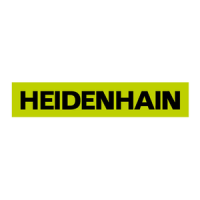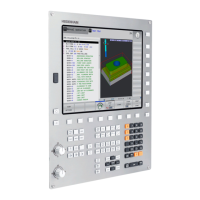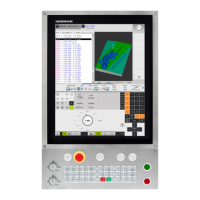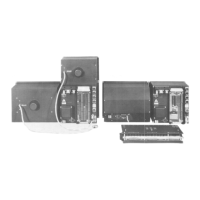10 Programming: Q Parameters
258
10.5 Calculating Circles
The TNC can use the functions for calculating circles to calculate
the circle center and the circle radius from three or four given
points on the circle. The calculation is more accurate if four points
are used.
Application: These functions can be used if you wish to determine
the location and size of a bore hole or a pitch circle using the
programmable probing function.
Function Soft key
FN23: Determining the CIRCLE DATA from three points
e.g. FN23: Q20 = CDATA Q30
The coordinate pairs for three points of the circle must be stored in
Parameter Q30 and in the following five parameters - here to Q35.
The TNC then stores the circle center of the reference axis (X with
spindle axis Z) in Parameter Q20, the circle center of the minor axis
(Y with spindle axis Z) in Parameter Q21 and the circle radius in
Parameter Q22.
FN24: Determining the CIRCLE DATA from four points
e.g. FN24: Q20 = CDATA Q30
The coordinate pairs for four points of the circle must be stored in
Parameter Q30 and in the following seven parameters - here to
Q37.
The TNC then stores the circle center of the reference axis (X with
spindle axis Z) in Parameter Q20, the circle center of the minor axis
(Y with spindle axis Z) in Parameter Q21 and the circle radius in
Parameter Q22.
Note that FN23 and FN24 beside the resulting
parameter also overwrite the two following parameters.
10.5 Calculating circles
MKAP10.PM6 30.06.2006, 07:04258
www.EngineeringBooksPdf.com

